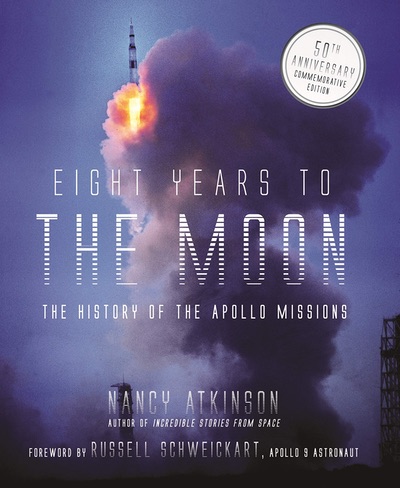Review: Eight Years to the Moonby Jeff Foust
|
| When Chaffee return to his office, his boss asked him if he learned anything at the meeting. “I learned that John Young is not going to crap his pants,” he responded. |
Atkinson’s eight years referenced in the title spans 1962 through 1969, at pace of one chapter per year. While there are some major figures of Apollo in those chapters, the bulk of the narrative is focused primarily on the rank-and-file engineers, particularly in Houston, working on various aspects of Apollo. Their individual contributions, while modest, were nonetheless essential to the development of the launch vehicles and spacecraft that would take astronauts to the Moon by the end of the decade.
Those efforts are described in various anecdotes, many humorous. Norman Chaffee, a chemical engineer, talked his way into a job in Houston in “Energy Systems,” even though he wasn’t sure exactly what that job entailed. (It turned out to involve propulsion and power systems on spacecraft.) Not long after he started, Chaffee was told to attend a meeting that would cover, among other issues, the reaction control system for Gemini. One of those other issues were the pressure suits for Gemini, where astronaut John Young criticized a proposal to eliminate a zipper in the suit’s crotch that was part of a waste management system and instead have astronauts wear diapers.
When Chaffee return to his office, his boss asked him if he learned anything at the meeting. “I learned that John Young is not going to crap his pants,” he responded.
There are serious tales to go along with the funny ones, too, and somber ones, too, particularly surrounding the Apollo 1 accident. Overall, they give a sense of the work it took for Apollo to be a success: people working long hours on various systems, from propulsion to communications to even the facility needed to receive the lunar samples the Apollo astronauts would return (and, on the initial mission, quarantine the astronauts.)
There’s not much in Eight Years to the Moon that changes the overall narrative of the Apollo program (Atkinson does note a little-known issue during reentry of Apollo 11, and apparently also Apollos 8 and 10, where the service module passed close to the command module during reentry after the two separated.) What it does, though, is remind readers that Apollo was more than just a few astronauts, politicians, and engineers usually discussed in the history of the program. An army of people worked out of the spotlight on elements that were small but essential to the success of the program, each with their own tales of trials and triumphs.
Note: we are temporarily moderating all comments subcommitted to deal with a surge in spam.
